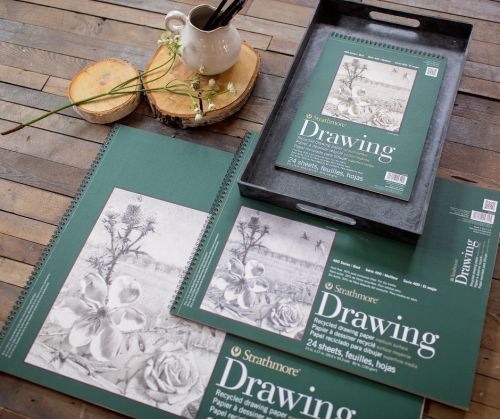We recently shared a behind-the-scenes video of paper being trimmed on our guillotine machine, which raised many great questions about paper-making and processes, including: what happens to the scraps that are trimmed off?
While we have many quillers and weavers itching to get their hands on those perfectly trimmed pieces, we recycle them! These are the types of pre-consumer fibers that get used to make the pulp for recycled papers. So that raises another question:
What is the difference between pre-consumer fibers and post-consumer fibers that get used for making recycled papers?
Pre-Consumer Recycled Fiber:
Material that has not been used by an end-consumer and is generated during a manufacturing process (like the video above). More examples of pre-consumer fiber are paper scraps generated from trimming at an envelope manufacturer or a paper plate factory.
Post-Consumer Recycled Fiber:
Material that has been used by an end-consumer, typically generated by households or by commercial, industrial and institutional facilities. For example, household recycling of paper products and businesses that recycle their office papers.
How is recycled fine art paper made from pre or post-consumer fibers?
Regardless of how the scraps were generated, they are sent back to a papermill to be re-worked and made into recycled fine art papers. The scraps get beaten until they break down into small particles, and the fibers are diluted with water and other additives like sizing to make pulp.

Pulp in the headbox
From there, the papermaking process continues on the Fourdrinier Machine. Click here to learn more about how paper is made.
Any post-consumer fibers that get used for making our recycled fine art papers are rated Grade A for cleanliness to ensure paper performance and appearance are not compromised. Any Strathmore pads with green covers indicates the paper is recycled. Below is a listing of our recycled papers and the amount of pre and/or post-consumer fiber they contain.
400 Series Toned Sketch

Recycled Material Content:
100% Recycled
30% Post-Consumer Fiber

Recycled Material Content:
100% Recycled
30% Post-Consumer Fiber

Recycled Material Content:
30% Post-Consumer Fiber

Recycled Material Content:
30% Post-Consumer Fiber

Recycled Material Content:
30% Post-Consumer Fiber

Recycled Material Content:
30% Post-Consumer Fiber

Recycled Material Content:
75% post-consumer fiber
25% tree-friendly hemp fiber

